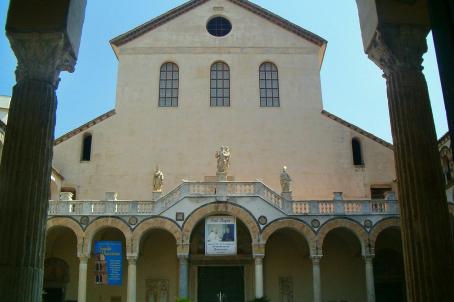Chiesa della Sacra Famiglia
The Sacra Famiglia church, built in 1971-1974, is the first religious building made entirely of reinforced concrete. The architect, Paolo Portoghesi, wanted to create a building that would express Christians concepts such as unity and centrality of the divine through the choice of curved shapes. The different colours of the windows symbolize the dialogue between the human nature and the divine nature. The tubular structures can be assimilated to lit flames that orient visitors upwards, where the circular openings invite direct contact with God.






